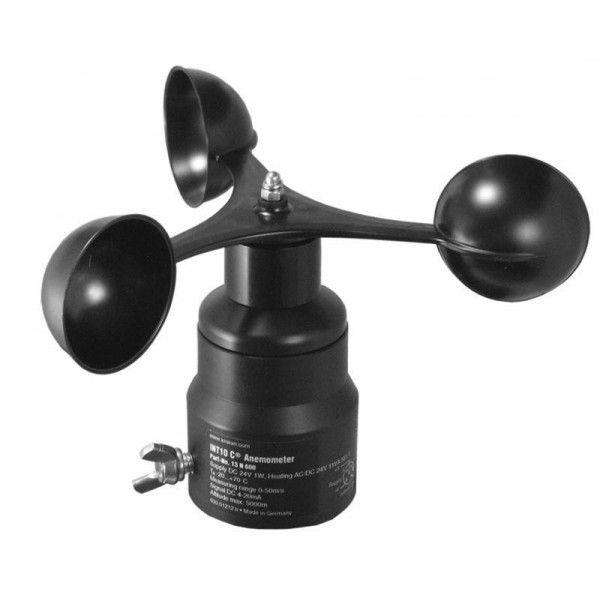Why an Anemometer is Necessary for Your Environmental Information Collection
Why an Anemometer is Necessary for Your Environmental Information Collection
Blog Article
All You Required to Know About Anemometers: Exactly How They Work, Why They Issue, and Where to Use Them
Anemometers, however often forgotten in the realm of clinical tools, play a critical function in various fields, providing valuable insights right into wind speed and air movement patterns. Understanding the technicians behind these gadgets is crucial for any individual looking for to harness the power of this information. From meteorologists tracking climate patterns to engineers creating frameworks with wind lots in mind, the applications of anemometers are diverse and far-ranging. As we explore the intricacies of anemometer innovation, we will reveal the inner functions of these tools, their significance, and the key factors to consider when choosing the right anemometer for particular applications.

Anemometer Fundamentals
An essential tool utilized to measure wind rate and direction, the anemometer plays an essential role in meteorology and various markets. An anemometer normally contains three or 4 cups that rotate in the wind, a vane that aims right into the wind, and sensing units to track the turnings or activities. By calculating the rotations or activities over a details time duration, the anemometer can determine wind speed. The vane aids figure out wind direction by aiming into the wind, supplying valuable information for climate forecasting, aeronautics, maritime operations, ecological surveillance, and wind energy applications.
There are various kinds of anemometers available, consisting of cup anemometers, vane anemometers, hot-wire anemometers, and sonic anemometers, each with its special features and applications. Mug anemometers are typically made use of for basic wind speed measurements, while vane anemometers are liked for directional dimensions. Hot-wire anemometers appropriate for low airspeeds, and sonic anemometers are optimal for high-precision dimensions in research and commercial setups. Understanding the fundamentals of anemometers is vital for exact wind information collection and analysis across various sectors.
Concepts of Anemometer Operation
Structure on the fundamental understanding of anemometer essentials, the principles of anemometer operation illuminate the technicians behind wind speed and instructions measurements. Cup anemometers, for instance, have 3 or more mugs that capture the wind, creating them to rotate much faster as the wind rate boosts. Hot-wire anemometers rely on a heated cord that cools down as wind passes over it, original site with the rate of cooling determining the wind rate.
Value of Anemometers
Anemometers play a crucial duty in measuring wind speed and direction, providing important information for climate forecasting, climate studies, ecological monitoring, and aviation operations. look at more info Meteorologists rely on anemometers to collect exact wind information, assisting them comprehend weather patterns, predict tornados, and concern prompt warnings to the public. Wind farm operators make use of anemometers to analyze wind problems and optimize power manufacturing from wind turbines.
Applications Across Various Industries
Applications of anemometers extend across varied markets, showcasing their flexibility and utility past meteorology. In the renewable resource sector, anemometers play an essential duty in analyzing wind conditions for wind ranch placements, ensuring optimal power production. Industries like building and construction and mining use anemometers to check wind rates, vital for safety and security methods, specifically when functioning at heights or in open-pit mines where strong winds can pose dangers. Anemometers are also indispensable in the aeronautics market, assisting pilots in understanding airspeed and wind instructions for safe liftoffs and touchdowns. The maritime industry advantages from anemometers for ship navigating, assisting seafarers anticipate weather condition changes and readjust courses appropriately. In farming, anemometers aid farmers in handling plant spraying by offering real-time information on wind speed to avoid drift. Moreover, anemometers locate applications in a/c systems to optimize air movement and enhance energy effectiveness in structures. The varied usage instances of anemometers highlight their relevance throughout numerous sectors, highlighting their crucial duty in enhancing operational security and performance (anemometer).

Choosing the Right Anemometer for Your Demands
For basic objectives, a mug anemometer is appropriate for measuring wind rate, while a vane anemometer supplies wind direction data. Hot-wire anemometers are optimal for reduced airspeed measurements, and ultrasonic anemometers offer high precision and resilience.

Conclusion
In verdict, anemometers play a critical role in gauging wind speed and instructions across numerous industries. It is important to take into consideration the significance of anemometers in order to make educated decisions when selecting the most suitable tool for gauging wind problems.
There are numerous kinds of anemometers readily available, consisting of cup anemometers, vane anemometers, hot-wire anemometers, and sonic anemometers, each with its distinct attributes and applications. Mug anemometers are commonly utilized for basic wind rate dimensions, while vane anemometers are chosen for directional measurements. Hot-wire anemometers are suitable for reduced airspeeds, and sonic anemometers are perfect for high-precision dimensions in research and industrial setups.Structure on the foundational understanding of anemometer essentials, the principles of anemometer operation clarify the technicians behind wind rate and instructions dimensions. For general functions, a cup anemometer is ideal for measuring wind rate, while a vane anemometer offers wind instructions information.
Report this page